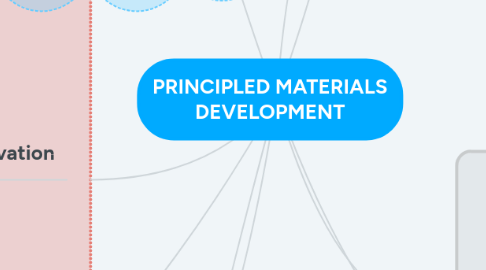
1. Positive Emotional Factors
1.1. pleasure, happines, confidence, self-esteem and empathy
2. Motivation
2.1. Dörneyi
2.1.1. Responsible for determining human behaviour by energizing it and showing direction
2.1.2. Language orientation Questionnarie
2.1.2.1. intrisic interest
2.1.2.2. (linguistic) self-confidence and self-esteem
2.1.2.3. anxiety (affective filter)
2.1.2.4. intrinsic value attributed to the activity i.e. its "worthiness"
2.2. Intrinsic motivation
2.2.1. behaviour performed for its own sake in order to experience pleasure and satisfaction such as the joy of doing a particular acitivity or satisfying one's curiosity
2.3. Extrinsic motivation
2.3.1. like instrumental motivation - driven by external reward
3. AFFECT
3.1. Arnold and Brown
3.1.1. aspects of emotion
3.1.2. feeling mood or attitude
3.2. Tomlinson
3.2.1. If learners do not feel any emotion while exposed to language in use, they are unlikely to acquire anything from their experience
4. COGNITIVE CHALLENGE
4.1. Tomlinson
4.1.1. Material should maximize learning potential by encouraging intellectual aesthetic and emotional involvement
4.2. Ghosn
4.2.1. Meaningful material is learned faster and remembered better than information that is less meaningful
4.3. Intent to consider how to create challenge by delpoying the cognitive domain in out learning materials
4.3.1. Bloom's Taxonomy
4.3.2. The cognitive domain refers to the use of our mental skils and to how we process knowledge
5. Awareness-rising and language learning materials
5.1. Feeding research on form-focused instruction into materials and syllabus design
5.2. Applying second language acquisition research to materials development
5.2.1. Negative Emotional Factors
5.2.1.1. stress and anxiety, fear, anger and depression
5.3. The importance of noticing
5.3.1. Schmidt
5.3.1.1. Unconscious vs conscious
5.3.1.1.1. awareness, effort, level of understanding, ability to articulate, knowledge and most importantly noticing
6. Output
6.1. Swain
6.1.1. Comprehensible Output Hypothesis
6.1.1.1. The output hypothesis maintains that learners learn from being pushed into producing output in a form comprehensible to their interlocutor
7. A plethora of theories
7.1. External Factors (emotions)
7.2. Internal Factors (rationality)
8. SLA principles
8.1. Pedagogy
9. Input and Output in language learning materials
9.1. Input
9.1.1. Pit Corder
9.1.1.1. Given motivation it is inevitable that a human being wil learn a L2 if he is exposed to the language data
9.1.2. Stephen Krashen
9.1.2.1. Affective Filter Hypothesis

